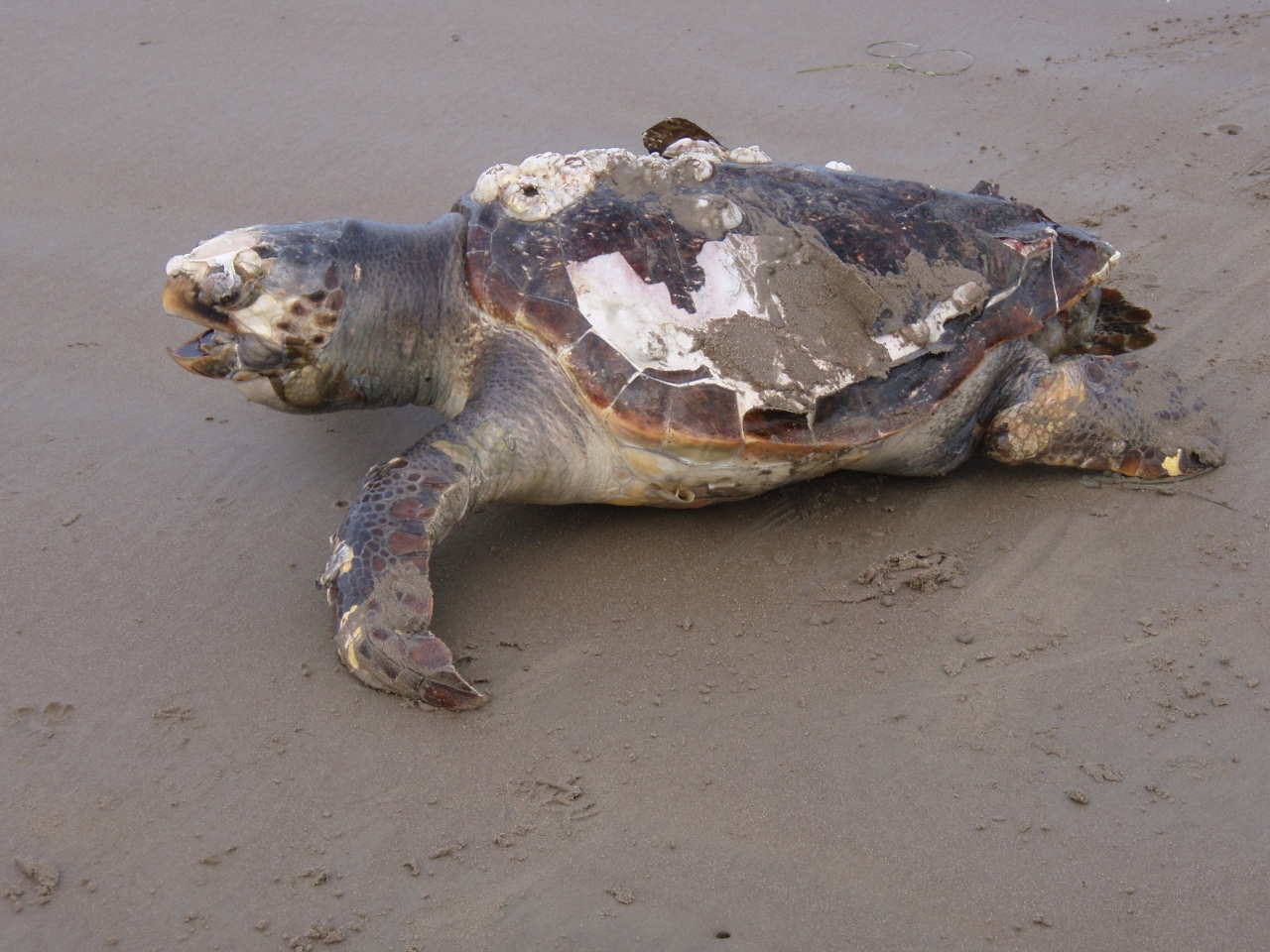Study Shows Signs of Hope for Endangered Sea Turtles
January 18, 2017
By Kim McDonald

A loggerhead turtle carcass on the main stranding beach at Playa San Lazaro.
Calandra Turner, UC San Diego
Bones from dead turtles washed up on Mexican beaches indicate that Baja California is critical to the survival of endangered North Pacific loggerhead sea turtles, which travel some 7,500 miles from their nesting sites in Japan to their feeding grounds off the coast of Mexico.
"These turtles are born in Japan, then migrate to the central and eastern north Pacific Ocean for some part of their juvenile lives before returning to Japan to breed and live out the remainder of their lives," said Carolyn Kurle, an assistant professor of biology at UC San Diego. "But nobody knew how long they were spending in each distinct ocean region."
That dearth of knowledge made it difficult to develop a comprehensive conservation plan for the endangered turtles. So Kurle's doctoral student, Calandra "Cali" Turner Tomaszewicz, who is now a postdoctoral fellow at UC San Diego, set out to find out.
In a study published in the current issue of the Journal of Animal Ecology, Turner Tomaszewicz, Kurle and Jeffrey Seminoff of NOAA's National Marine Fisheries Service Southwest Fisheries Science Center in La Jolla, determined that while some turtles may spend more than 20 years feeding in the productive waters off the Baja coast before migrating back to Japan to breed. Some turtles may actually spend only half that much time in this area.
"This is good news for this endangered population of turtles," said Turner Tomaszewicz.
To determine the turtles' migratory patterns at various ages, Turner Tomaszewicz chemically analyzed the stable nitrogen isotopes laid down during bone formation in the concentric growth rings of the humerus bones of dead turtles found on Mexican beaches.
Like the annual growth rings of trees, powder from these rings of bone allowed her to determine—when compared to the distinct nitrogen isotope profiles of different parts of the Pacific Ocean—where the turtles traveled during each year of their lives.
"From a conservation point of view, especially for a migratory species, the most essential goal should be to prioritize conservation efforts where they can have the biggest impact in protecting the population and facilitating recovery, in the most efficient way possible," said Turner Tomaszewicz.
One of those places appears to be off the Baja coast, the scientists concluded in their paper, where the population of loggerhead turtles ranges from three to 24 years of age.
"Cali demonstrated that there is a bimodal distribution to loggerhead settlement into these waters off Baja from the central North Pacific, with one group of turtles recruiting to that area at around an average of seven years of age and a second group recruiting at an average of 16 years of age," said Kurle. "She also determined that loggerheads mature at around 25 years of age, meaning they leave this area when they are about 24 years old to migrate back to Japan so they can breed."
This means that the turtles live from 10 to more than 20 years off the Baja coast, a particularly dangerous region where Hoyt Peckham of Stanford University, another co-author of the paper, had estimated in an earlier study that about 1,000 loggerheads a year are accidentally trapped and killed by fisherman as "bycatch" in small-scale "artisanal" fishing operations. Larisa Avens, of NOAA's Southwest Fisheries Science Center in La Jolla, was the fifth co-author of the Journal of Animal Ecology paper.
From those estimates, Turner Tomaszewicz calculated that loggerhead turtles that spend 10 years in Baja have a 30 percent of living long enough to travel back to Japan to breed, while turtles who spend 20 years in Baja have only a 10 percent chance to breed.
"The low survivorship of half of the turtles is somewhat depressing news for the loggerheads, but these data are now being used to develop better management techniques for the Mexican artisanal fishery to prevent such high turtle bycatch numbers," said Kurle. "The discovery that the turtles have a bimodal distribution to their recruitment into the Baja regional from the central North Pacific indicates that not all loggerheads spend upwards of 20 years in this region, meaning some have a greater chance of avoiding negative fisheries interactions and surviving to breed."
"Our study shows that this foraging hotspot is an incredibly important habitat for the reproductively-valuable juvenile life stage for North Pacific loggerheads and that this area needs to be a high-priority conservation habitat for this population," said Turner Tomaszewicz.
Funding for the study was provided by grants from NOAA Fisheries, National Institutes of Health (T32 GM007240), a UC-MEXUS Dissertation Grant, an ARCS Foundation Scholarship and a Jeanne Messier Memorial Fellowship.
